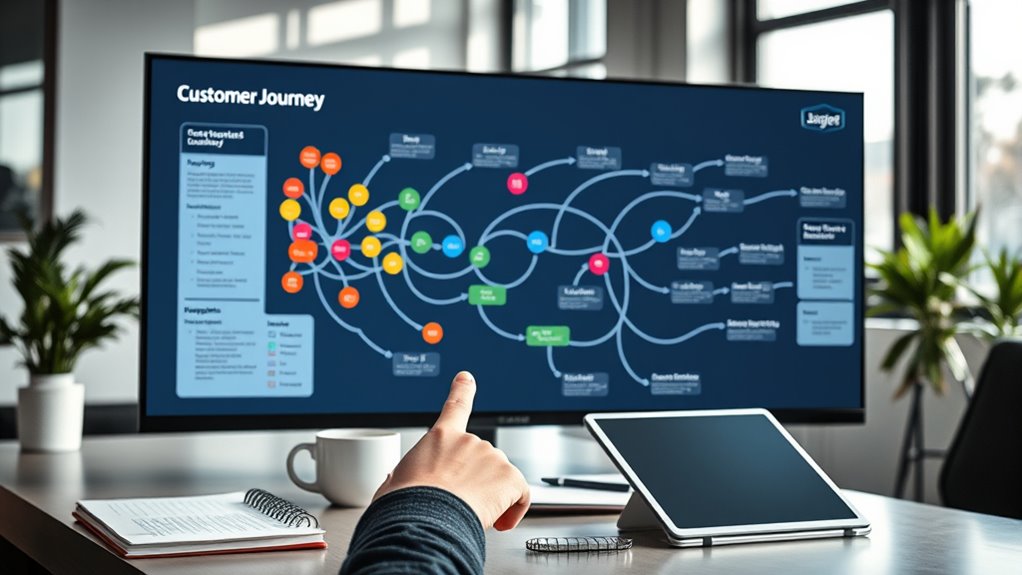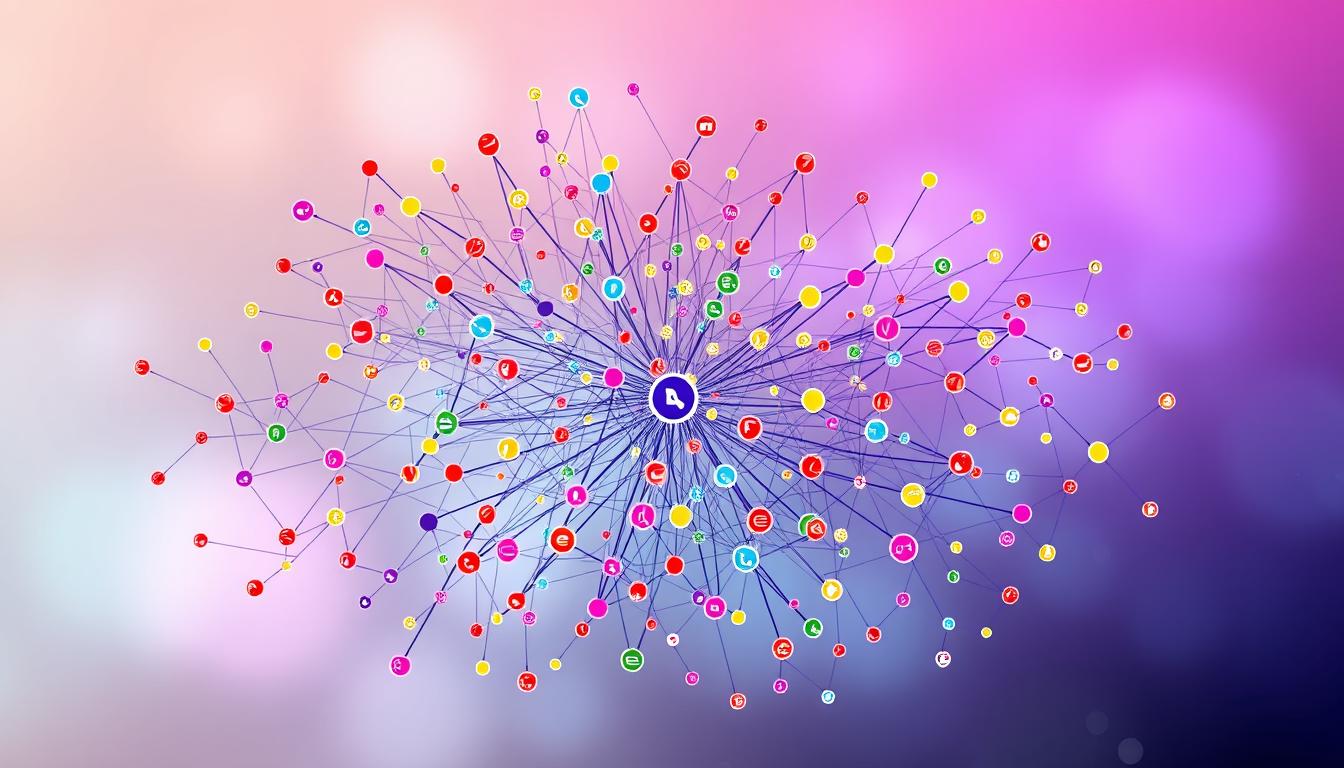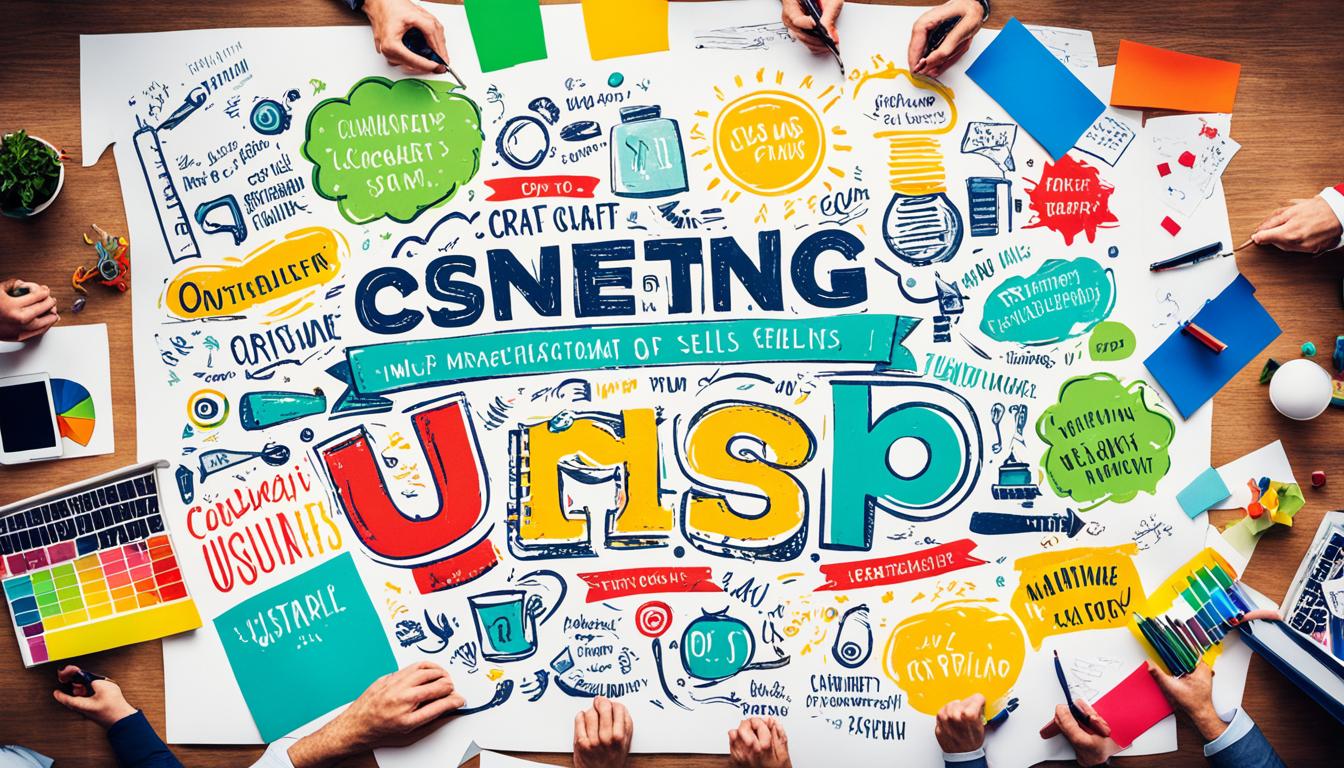To deliver the right message at the right time, you need to map your customers’ journey carefully. Understand their stage—awareness, consideration, decision, or loyalty—and tailor your emails accordingly. Use engagement metrics and timing insights to schedule messages when customers are most responsive. Personalize content based on behaviors and preferences to boost relevance. By aligning your email campaigns with each customer’s path, you’ll improve engagement and conversions—keep exploring to open more effective strategies.
Key Takeaways
- Map customer touchpoints to identify optimal moments for personalized email communication.
- Segment audiences based on engagement data to deliver relevant messages at the right times.
- Analyze timing patterns to schedule emails during periods of peak customer interaction.
- Tailor email content to each stage of the customer journey for maximum relevance and impact.
- Use metrics like open and click-through rates to refine timing and messaging strategies continuously.

Have you ever wondered how to deliver the right message at the right time through email? It’s a common challenge, but mastering it can markedly boost your engagement and conversions. The key lies in understanding your customer journey and applying effective personalization tactics. When you know where your customer is in their journey, you can craft targeted messages that resonate. Personalization isn’t just about inserting a name; it’s about tailoring content based on behaviors, preferences, and interactions. For example, if a customer browses your website’s new arrivals but doesn’t purchase, sending a follow-up email with personalized recommendations or a special offer can nudge them toward a purchase. Using customer data this way makes your emails more relevant, increasing the chances they’ll open and engage. Recognizing the role of emotional alignment can further enhance your connection with customers, making your messaging more compelling. Tracking engagement metrics plays a vital role in refining your approach. Metrics like open rates, click-through rates, and conversions tell you whether your messages hit the mark. If open rates are low, you might need to revisit your subject lines or send times. If click-through rates lag, consider adjusting your content or calls to action. Monitoring these metrics allows you to identify patterns and optimize your messaging strategy. For instance, if you notice higher engagement during specific times of day, schedule your emails accordingly. Segmenting your audience based on these insights ensures each recipient gets content that speaks directly to their interests and stage in the customer journey. Implementing a customer journey map helps you visualize the various touchpoints where your emails can make an impact. By understanding the different stages—awareness, consideration, decision, and loyalty—you can create tailored campaigns for each phase. At the awareness stage, focus on introducing your brand or educating your audience. During consideration, provide detailed product information or reviews. When customers are ready to decide, send reminders or exclusive offers. Post-purchase, nurture loyalty with personalized follow-ups and rewards. This strategic layering ensures your messaging feels timely and relevant, guiding your customer smoothly through their journey. The power of customer journey mapping lies in your ability to align your communication with your audience’s needs and behaviors. By leveraging personalization tactics and continuously analyzing engagement metrics, you can craft email campaigns that are not only timely but also meaningful. This approach builds trust and encourages ongoing interaction, turning casual browsers into loyal customers. Remember, the goal is to deliver the right message at the right time—something you can achieve by understanding your customer’s path and responding with precision and care.
Frequently Asked Questions
How Can I Personalize Email Content Based on Customer Journey Stages?
To personalize email content based on customer journey stages, you should leverage segmentation strategies to categorize your audience by behavior and preferences. Use personalization techniques like dynamic content and tailored messaging to address each stage, whether they’re new leads or loyal customers. This approach guarantees your messages are relevant, timely, and engaging, increasing conversions and fostering stronger relationships at every step of their journey.
What Tools Are Best for Real-Time Customer Journey Mapping?
To stay ahead of the game, you need excellent tools for real-time customer journey mapping. Platforms like HubSpot, Salesforce, and Adobe Experience Cloud excel because they seamlessly integrate customer feedback and data. These tools give you a clear picture of customer interactions as they happen, allowing you to adapt your email strategies on the fly. With these, you can truly hit the nail on the head, delivering the right message at the right time.
How Do I Measure Email Engagement Effectiveness Across Journeys?
You measure email engagement effectiveness by analyzing open rates, click-throughs, and conversions across different customer segments. Use A/B testing to compare subject lines, content, and send times, helping you identify what resonates best. Incorporate segmentation strategies to tailor messages for specific groups, which boosts engagement. Regularly review these metrics, adjust your tactics accordingly, and optimize the customer journey to guarantee your emails deliver the right message at the right time.
How Should I Handle Abandoned Cart Scenarios in Journey Mapping?
When handling abandoned cart scenarios in your journey map, focus on cart recovery strategies that re-engage customers. Send timely, personalized emails reminding them of their abandoned cart, possibly offering incentives. Track their interactions to refine your approach, ensuring your messages are relevant and timely. This targeted cart recovery approach helps convert abandoned carts into completed purchases, boosting your overall engagement and revenue.
What Are Common Pitfalls to Avoid in Customer Journey Email Planning?
You should avoid segmentation errors that lead to irrelevant messages and over-automation that feels impersonal or spammy. Always double-check your audience segments to guarantee the right people receive the right content. Don’t rely solely on automation—add human touches when needed. This prevents your emails from feeling robotic and improves engagement. Stay flexible and monitor results, adjusting your strategy to keep the customer journey personalized and effective.
Conclusion
By mapping your customer journey, you’re like a skilled navigator steering a ship through unpredictable waters. When you send the right message at the right time, it’s as if you’ve caught the wind perfectly aligned with your sails—propelling you forward. Remember, one brand increased engagement by 20% simply by understanding their customers’ needs at each step. With clear mapping, you’ll avoid storms and reach your destination faster, turning prospects into loyal customers.








